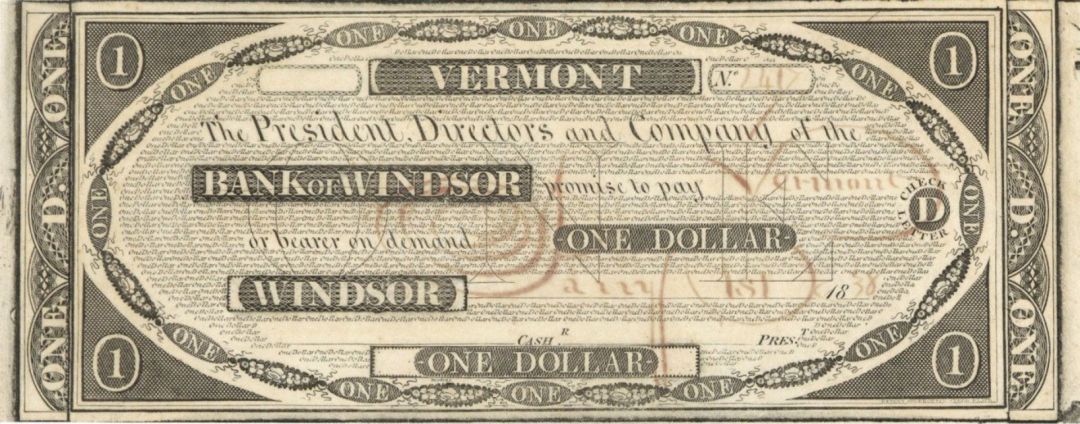Bank of Windsor - $1 Obsolete Note
Inv# OB1201 Paper MoneyOne Dollar. Bank of Windsor. Haxby-VT-280-G8.
A banknote (often known as a bill, paper money, or simply a note) is a type of negotiable promissory note, made by a bank, payable to the bearer on demand. Banknotes were originally issued by commercial banks, which were legally required to redeem the notes for legal tender (usually gold or silver coin) when presented to the chief cashier of the originating bank. These commercial banknotes only traded at face value in the market served by the issuing bank. Commercial banknotes have primarily been replaced by national banknotes issued by central banks. National banknotes are generally legal tender, meaning that medium of payment is allowed by law or recognized by a legal system to be valid for meeting a financial obligation. Historically, banks sought to ensure that they could always pay customers in coins when they presented banknotes for payment. This practice of "backing" notes with something of substance is the basis for the history of central banks backing their currencies in gold or silver. Today, most national currencies have no backing in precious metals or commodities and have value only by fiat. With the exception of non-circulating high-value or precious metal issues, coins are used for lower valued monetary units, while banknotes are used for higher values. In China during the Han Dynasty promissory notes appeared in 118 BC and were made of leather. Rome may use a durable lightweight substance as promissory notes in 57 AD which have been found in London. However, Carthage was purported to have issued bank notes on parchment or leather before 146 BC. Hence Carthage may be the oldest user of lightweight promissory notes. The first known banknote was first developed in China during the Tang and Song dynasties, starting in the 7th century. Its roots were in merchant receipts of deposit during the Tang Dynasty (618–907), as merchants and wholesalers desired to avoid the heavy bulk of copper coinage in large commercial transactions. During the Yuan Dynasty, banknotes were adopted by the Mongol Empire. In Europe, the concept of banknotes was first introduced during the 13th century by travelers such as Marco Polo, with European banknotes appearing in 1661 in Sweden. Counterfeiting, the forgery of banknotes, is an inherent challenge in issuing currency. It is countered by anticounterfeiting measures in the printing of banknotes. Fighting the counterfeiting of banknotes and cheques has been a principal driver of security printing methods development in recent centuries. (Wikipedia)










Ebay ID: labarre_galleries